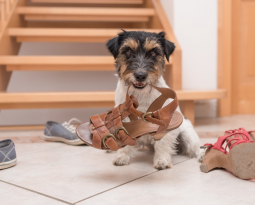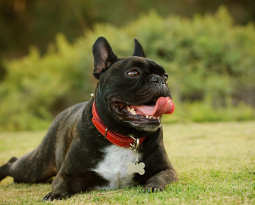Limping
Perhaps the easiest to spot is limping. If Spot begins to have a different gait, or appears to be favoring a leg, it is possible arthritis is to blame. The limp may seem dramatically worse when they first stand but appear to get better as they ‘warm up.’ If this is common, frequent, even if not ‘every time’ it is worth looking into. If not arthritis, it may be something else.
Any Difficult Moving
Like limping, any difficult in moving is easy to spot and can be a sure sign of arthritis in canines. Activities that were formerly easy to accomplish or favorites may become hurdles too large for them to navigate. Jumping on the couch or into the car used to be met with vigor but now whines of upset. The pain or discomfort of arthritis may be to blame.
Spine Troubles
These can be much more difficult to assess but are just as serious (if not more so). The legs, ankles, hips, are not the only places arthritis can set in. The back is also susceptible. Things like a sore neck, a strange hunch or total lameness in either or both back legs are signs there is something amiss.
Fatigues, Tiredness
Just like us, when dogs are suffering from some illness or injury they get fatigued. Walks become shorter, play sessions dwindle. Your pet would rather spend their days sleeping or resting somewhere cozy. While sleeping warm and cuddly is a constant joy, even more so with age as energy dwindles, when it becomes excessive there is a high chance something is amiss.
Irritable
As the dogs become more and more in daily pain, their irritability increases. When handled, approached or played with they may be more aggressive, attempting to bite. This is especially true if wherever the handling occurs is near or in a way that amplifies their hurt.
Atrophy
All of these can and will lead to muscle atrophy. As the animal avoids movement and activity (exercise!) the muscle mass will decrease. Arthritic dogs will look smaller, their legs thinning due to lack of activity.
Licking, Biting, Chewing
If your dog suffers from any injury, not just arthritis, they will attempt to nurse their wounds. This will look like licking, chewing, or even biting at the injury. They can lose hair and their skin can become inflamed with the constant irritation.
How to Help
If any or all of these symptoms are visible in your pooch, call your vet and bring them in. It may not be arthritis, it could be worse or a simpler causes that is curable with treatment. Unfortunately, arthritis is not curable, just like in humans. There are procedures that can help ease the pain, but nothing that will take their joints back to their youthful form.
When you know it is arthritis there are things to do to help. Keep your pup dry and warm, wet and cold conditions aggravate the condition. Make sure they have a soft surface to rest on and get comfortable. Make sure their diet is in check. Obesity only worsens the condition as the muscles are already weakened. Keep your companion at a health weight, add in joint health supplements to help keep inflammation down. Exercise is important in keeping the joints strong but stick to the right amount and intensity.
If this has helped you learn how to tell if a dog has arthritis, and you have found a some of them, call your vet (contact us here) and begin mapping out a treatment plan that will see your senior pet living a healthy, happy and as pain free a life as possible.







